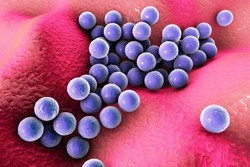New vaccines against Staphylococcus
SA is a gram-positive bacterium and opportunistic pathogen living as a commensal in the human skin and nasal cavities. However, it could also become a major cause of deadly invasive infections. Such pathogenicity is a result of bacterial factors interacting with multiple external signals from the host environment. Two classes of emerged methicillin-resistant SA (MRSA) strains are either associated with the hospital environment or the community. Nevertheless, there are no licenced vaccines against SA yet. Exploratory vaccine formulations have recently been shown to have protective efficacy in mice. The EU-funded RESTAVAC (Regulation of expression of Staphylococcus aureus vaccine antigen candidates) project elucidated the expression and regulation of SA virulence factors and potential vaccine antigens. To investigate the molecular mechanisms of vaccine antigen regulation, the promoter regions for potential vaccine antigens were identified by bioinformatics approach. Further experiments confirmed the key iron uptake gene fhuD2 as a major vaccine candidate. Its expression was characterised using transcriptional promoter fusion and mutants of its predicted regulatory proteins. Regulatory proteins were identified using the pulldown study. The most abundant were found to be the SarA and SarS DNA-binding proteins. The others represented the virulence regulators MgrA, Rot, SarR. In general, research outcomes suggested that a multi-component regulatory complex governs the virulence factors and is responsible for its specific in vivo induction. Importantly, researchers developed a system to monitor gene expression in animal models of infection. RESTAVAC designed a stable plasmid bioluminescent reporter for maintenance within SA. The in vivo expression monitoring of fhuD2 demonstrated stability of the reporter plasmid until day seven of the infection. Application of this system revealed high induction of fhuD2 in all host organs. The analysis also detected the progression of SA bacteria after intravenous infection. Finally, the comparative expression of the reporters within different MRSA strains revealed profound regulatory differences in the expression of vaccine antigens and known regulators. This suggests that transcriptional profiling can identify a molecular signature that describes the epidemiology of emerging clones.







